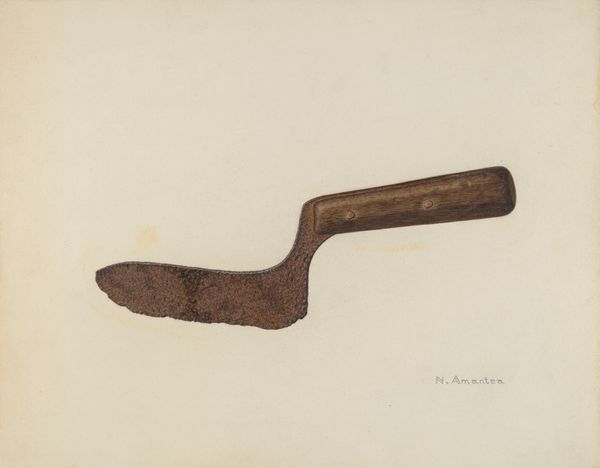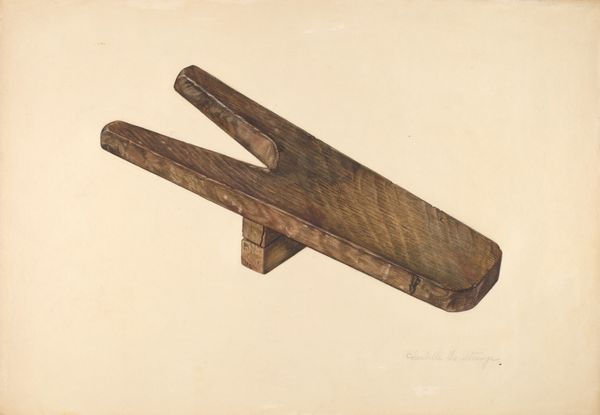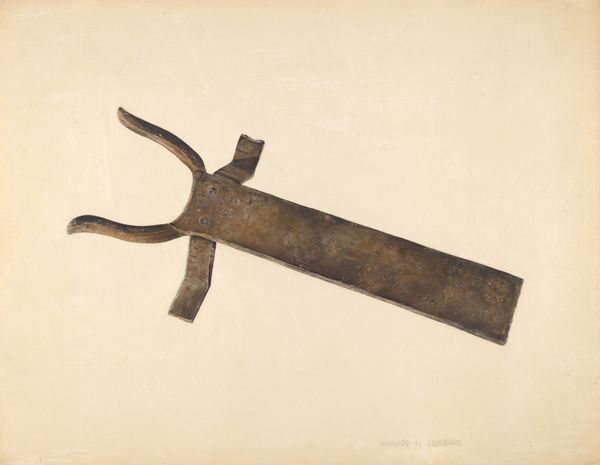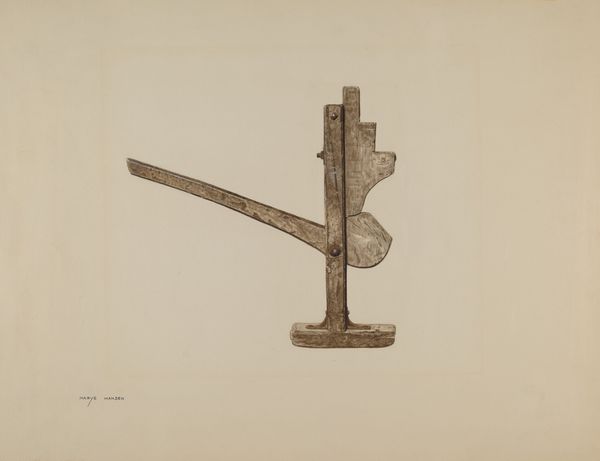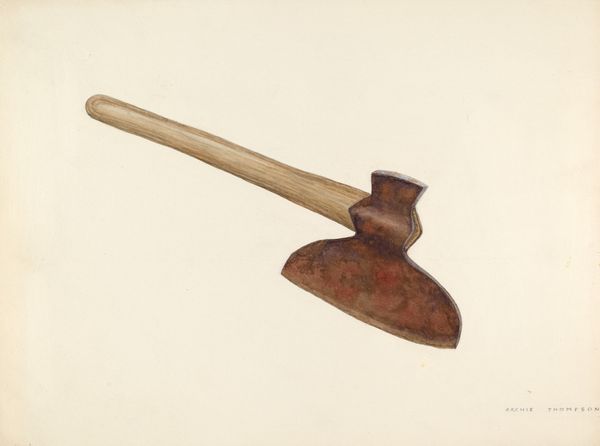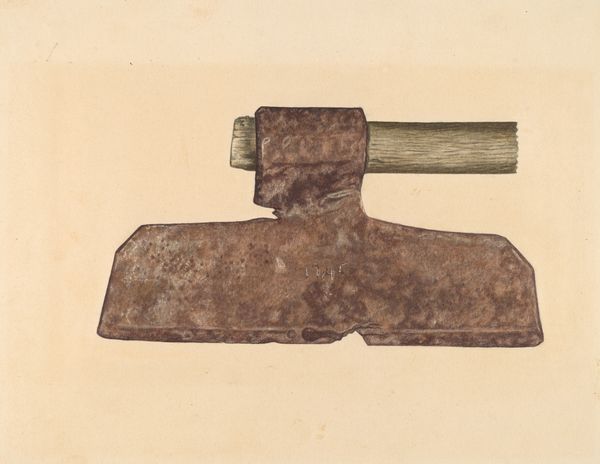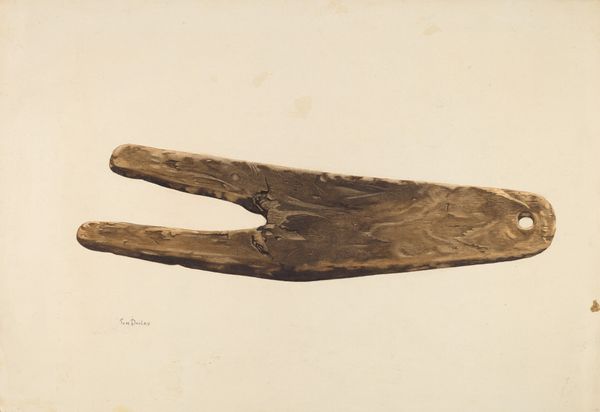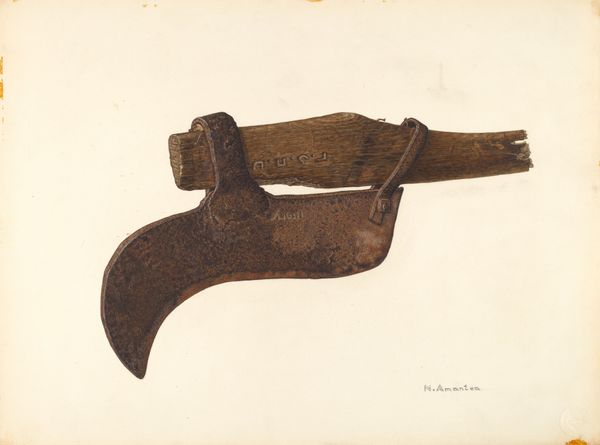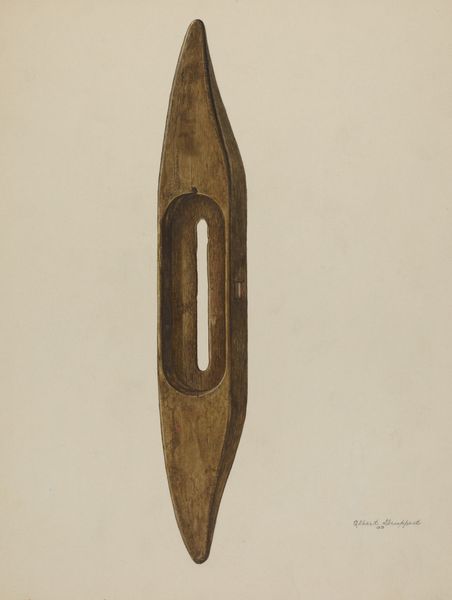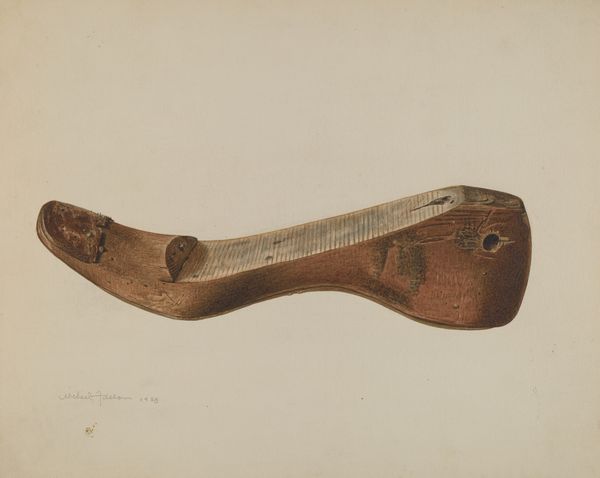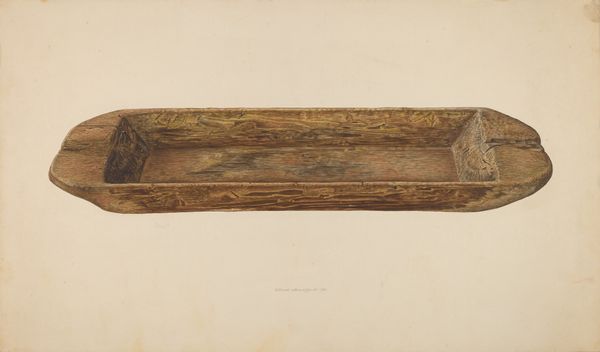
drawing, watercolor
#
pencil drawn
#
drawing
#
watercolor
#
pencil drawing
#
watercolour illustration
#
realism
Dimensions: overall: 27.7 x 35.5 cm (10 7/8 x 14 in.) Original IAD Object: handle: 10 1/2" long; 1 1/4" thick; head: 2" high; 2" long; 1 1/2" wide
Copyright: National Gallery of Art: CC0 1.0
Curator: Ethel Dougan’s circa 1940 piece, titled "Blacksmith's Hammer," rendered in watercolor and pencil, offers a seemingly simple depiction, but one that warrants deeper examination. Editor: It's immediately striking how quiet this piece is, almost melancholic. The lone hammer centered on the page evokes a sense of abandonment, a tool laid down after long use. Curator: Indeed, the composition, particularly the placement of the hammer isolated against the negative space, contributes significantly. Note the texture achieved through the layering of watercolor washes and delicate pencil lines, imbuing the object with a palpable sense of age and wear. The structure is clearly defined, showcasing form through light and shadow. Editor: And beyond the form, there's a profound symbolism at play. The hammer, a tool of creation and destruction, evokes images of labor, industry, and the human capacity to shape the world. In many cultures, the blacksmith represents not only craftsmanship but also the power of transformation—taking raw materials and forging something new. Curator: That reading certainly resonates. Considering its function, the artist has imbued it with almost gestural qualities through a masterful balance of tonal values and implied lines. Editor: Precisely! This humble object transforms into an icon of human endeavor and perseverance, inviting contemplation on the value of work and the legacy we leave behind. This artwork holds echoes of a past where physical labor held a more central place in our collective identity. The simplicity makes it universally relatable. Curator: I concur. It shows that form need not dictate function—that an artwork’s structure has less relevance than what we draw from it conceptually, socially, emotionally. Editor: Ultimately, Dougan’s subtle rendering transcends a mere representation of a tool and transforms into an artifact charged with cultural memory. Curator: A powerful example of how artistic technique and meticulous arrangement invite meaningful readings into the object itself.
Comments
No comments
Be the first to comment and join the conversation on the ultimate creative platform.
